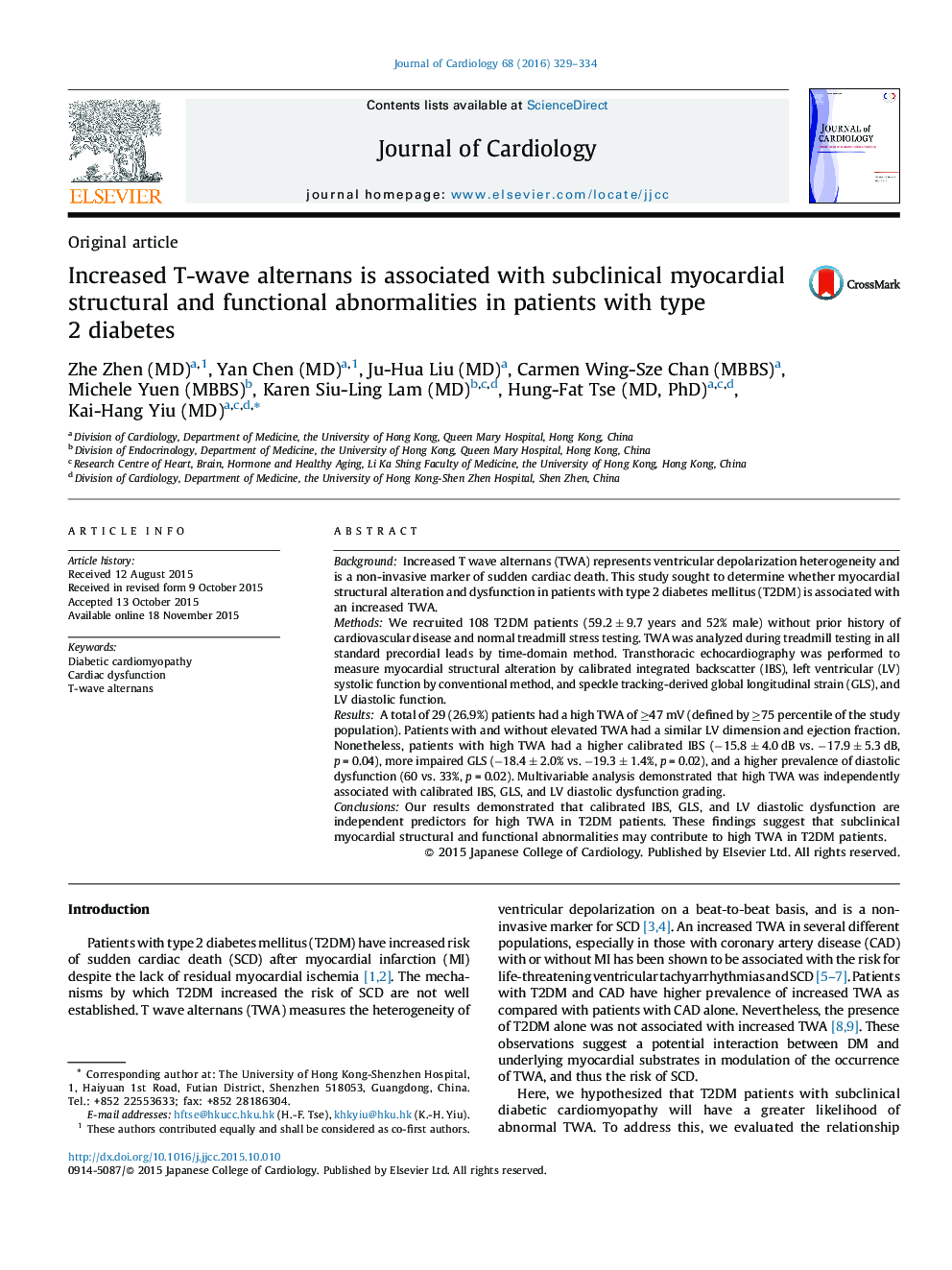| Article ID | Journal | Published Year | Pages | File Type |
|---|---|---|---|---|
| 2962692 | Journal of Cardiology | 2016 | 6 Pages |
BackgroundIncreased T wave alternans (TWA) represents ventricular depolarization heterogeneity and is a non-invasive marker of sudden cardiac death. This study sought to determine whether myocardial structural alteration and dysfunction in patients with type 2 diabetes mellitus (T2DM) is associated with an increased TWA.MethodsWe recruited 108 T2DM patients (59.2 ± 9.7 years and 52% male) without prior history of cardiovascular disease and normal treadmill stress testing. TWA was analyzed during treadmill testing in all standard precordial leads by time-domain method. Transthoracic echocardiography was performed to measure myocardial structural alteration by calibrated integrated backscatter (IBS), left ventricular (LV) systolic function by conventional method, and speckle tracking-derived global longitudinal strain (GLS), and LV diastolic function.ResultsA total of 29 (26.9%) patients had a high TWA of ≥47 mV (defined by ≥75 percentile of the study population). Patients with and without elevated TWA had a similar LV dimension and ejection fraction. Nonetheless, patients with high TWA had a higher calibrated IBS (−15.8 ± 4.0 dB vs. −17.9 ± 5.3 dB, p = 0.04), more impaired GLS (−18.4 ± 2.0% vs. −19.3 ± 1.4%, p = 0.02), and a higher prevalence of diastolic dysfunction (60 vs. 33%, p = 0.02). Multivariable analysis demonstrated that high TWA was independently associated with calibrated IBS, GLS, and LV diastolic dysfunction grading.ConclusionsOur results demonstrated that calibrated IBS, GLS, and LV diastolic dysfunction are independent predictors for high TWA in T2DM patients. These findings suggest that subclinical myocardial structural and functional abnormalities may contribute to high TWA in T2DM patients.
